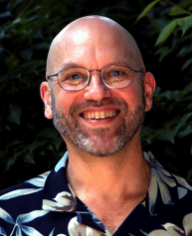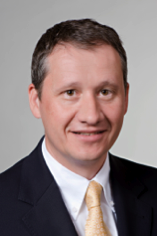Plenary Talks
Plenary Talk I
Monday, 4 November 2013, 9:30-10:30
Conference Hall (Tokyo Big Sight)
Chair: Makoto Kaneko (Osaka University)
 Dynamic Robots: Mobility, Speed and Dexterity Dynamic Robots: Mobility, Speed and Dexterity
Dr. Marc Raibert
Boston Dynamics, USA |
Advanced robots with dynamic control systems and high-performance mechanical designs are leaving the laboratory and entering the world. They are particularly useful operating in rough terrain, where existing wheeled and tracked vehicles cannot go. In this talk I will give a status report on the robots we are developing at Boston Dynamics, such as AlphaDog, the follow-on to BigDog, Cheetah, a fast-running quadruped, and Atlas, an anthropomorphic robot designed to explore real-world tasks.
Brief Biography: Marc Raibert is CTO and founder of Boston Dynamics, a company that develops some of the world’s most advanced robots, such as BigDog, AlphaDog, Petman, Atlas and Cheetah. The company specializes in dynamic robots that move with the agility and athleticism normally found only in people and animals. Before Boston Dynamics, Raibert was Professor of Electrical Engineering and Computer Science at MIT from 1986 to 1995 and Associate Professor of Computer Science and Robotics Institute at Carnegie Mellon from 1980 to 1986. Raibert is a member of the National Academy of Engineering.
Plenary Talk II
Tuesday, 5 November 2013, 9:30-10:30
Conference Hall (Tokyo Big Sight)
Chair: Toshio Fukuda (Meijo University)
 Robotics-Assisted Automatic Fabrication of Cellsheets Robotics-Assisted Automatic Fabrication of Cellsheets
for Regenerative Medicine
Prof. Masayuki Yamato
Tokyo Women's Medical University, Japan |
We have developed a novel strategy for regenerative medicine to recover tissue structures and functions by using transplantable cell sheets. These cell sheets are fabricated on temperature-responsive cell culture surfaces, on which a temperature-responsive polymer, poly(N-isopropylacrylamide), is covalently grafted by electron beam irradiation or other chemical reactions. The grafted thickness is precisely controlled around 20 nm dependent on cell types, and such homogeneous polymer grafting must be a successful example of nanotechnology. These surfaces achieve temperature-responsive cell adhesion and harvest with no need for proteolytic enzyme such as trypsin and dispase. Only by reducing temperature around room temperature, all the cultured cells are harvested from the dish as a single contiguous cell sheet. We have applied transplantable cell sheets fabricated on temperature-responsive culture surfaces for cell delivery. Since these cell sheets retain extracellular matrix deposited during culture underneath them, integration to tissue or other cell sheets is observed immediately after the transplantation. Current statuses of cell sheet-based therapies for human are as follows: cornea, cardiac, esophagus, periodontal ligament, and knee cartilage treatments. In my talk, I’d like to show the results of human clinical applications and robotic systems to automatically fabricate transplantable cell sheets. We believe that robotics should achieve future regenerative medicine to improve efficacy as well as safety, and reduce the manufacturing cost drastically.
Brief Biography: Masayuki Yamato was originally trained with a background in cell biology and biochemistry, but over the past decade, his research interests have been focused on the regeneration of various tissues and organs, such as the cornea, using cell sheets, instead of traditional tissue engineering approaches using cells seeded into biodegradable scaffolds. In particular, his work with both corneal and oral mucosal epithelial cell sheets has already been applied to human patients suffering from ocular surface dysfunctions. Presently, he is therefore currently engaged in research collaborations with doctors from various medical departments, such as ophthalmology, cardiology, gastroenterology, urology, and thoracic surgery; with the aim of taking regenerative medicine using cell sheets from the level of basic laboratory science including stem cell biology and biomaterials to clinical applications.
Plenary Talk III
Wednesday, 6 November 2013, 9:15-10:15
Conference Hall (Tokyo Big Sight)
Chair: Kazuhiro Kosuge (Tohoku University)
 Surgical Robotics: Surgical Robotics:
From application specific robots to automated design and
3D-printing of patient-specific, disposable robots
Prof. Tim C. Lüth
Technische Universität München, Germany |
Since a few years, companies that sell non-industrial robot systems have incredible stock market values in comparison to industrial robot manufacturers. Names of those companies are “Intuitive Surgical”, “iRobot”, or “Mako Surgical”. Two of the named companies are very successful in the area of robotics for surgery. One company is active in minimally invasive surgery using tele-manipulation (Intuitive), the other one in orthopedic surgery using hands-on robotics (Mako). Both approaches combine the medical doctors mind with the precision and accuracy of a robot system. This is an important change for the future of surgery!
In the talk, different medical applications are presented and also concepts of different robot systems and robotic control approaches that are in use in clinical robot systems. In comparison with the original concepts of the pioneers Brian Davies (Imperial College, prostate robot) and Russell Taylor (JHU, orthopedics robot) twenty years ago, we have much more computational power, sensors, motors, materials, and know-how about the design of medical robots. Today, it is possible to design and manufacture application-specific surgical robot systems successfully. On the other hand, there are only a few medical applications that allow for high investment of a robot development, clinical trails, and regulatory affairs. There is a need for a complete different approach: The design of cheap robot systems that can be manufactured in a very short time even for one patient’s case, using standardized drives and control systems. The manufacturing of the robot structure can be done in less than 24 hours by using selective laser sintering (Polyamide) or melting (titanium, steel). In the talk, I will also show some of those robot systems and their expected future.
Brief Biography: Tim C. Lüth, is Professor and Director of the Institute of Micro Technology and Medical Device Technology of the Technische Universitaet Muenchen (TUM). Since 2013, he is also dean of the Mechanical Engineering Faculty at TUM. He was born in Hamburg, Germany, in 1965, and started his studies in 1984. He received his degree in electrical engineering from the Darmstadt University of Technology, Darmstadt, Germany in 1989. Afterwards, he received the Ph.D. degree in robotics and habilitation in computer science from the University of Karlsruhe in 1993 and 1997, respectively. In 1994-1995, he was a Visiting Researcher at the MITI-AIST Electrotechnical Laboratory in Tsukuba, Japan. In 1997, Lüth became Professor for surgical navigation and robotics at the medical school Charité Berlin (HU). In 2001, he became the Director for Mechatronic Medical Technology at the Fraunhofer-Institute for Production Systems and Design Technology IPK. Since 2005, Lüth works at TUM. In 2006, he received a professor status at the University of Toronto, Canada. The European Patent Office elected him in 2007 as TOP-3 inventor in the category “lifetime achievement” for his patent activities in the area of surgical robotics and navigation. He received several national and international awards for his research on medical devices. In 2010, Lüth became elected Member of “acatech,” the German National Academy for Science and Technology. In 2012 he was elected as vice dean and in 2013 as dean of the mechanical engineering faculty. Lüth is active Member of the IEEE R&A Chapter and the IEEE EMB Chapter.
Contact Address
Program Chair
Makoto Kaneko, Osaka Univ.
Program Co-Chairs
Oussama Khatib, Stanford Univ. (USA)
Raja Chatila, LAAS-CNRS (EU)
ZhiDong Wang, Chiba Inst. of Tech.(Asia/Oceania)
Email: program(at)iros2013.org
|

